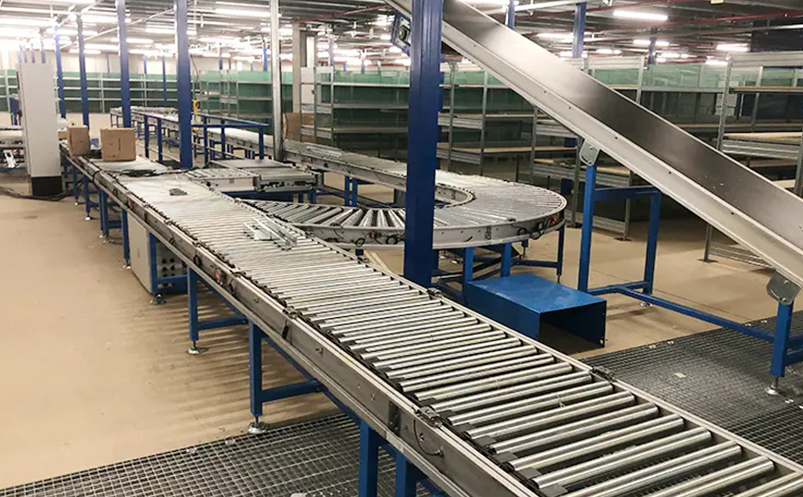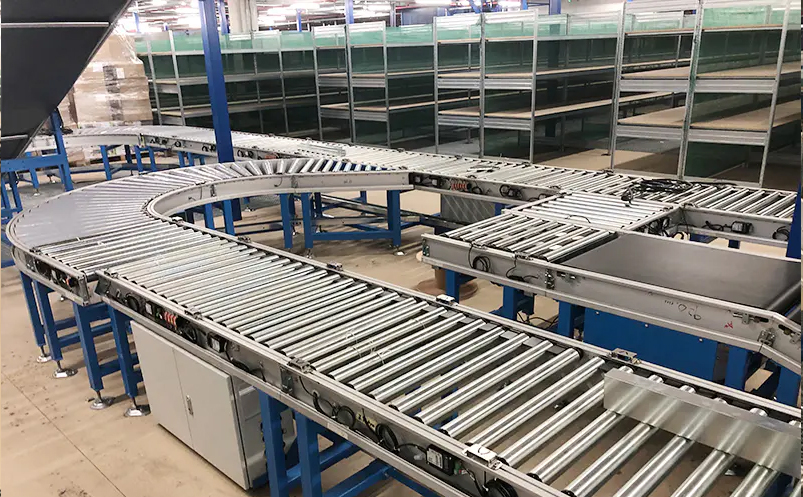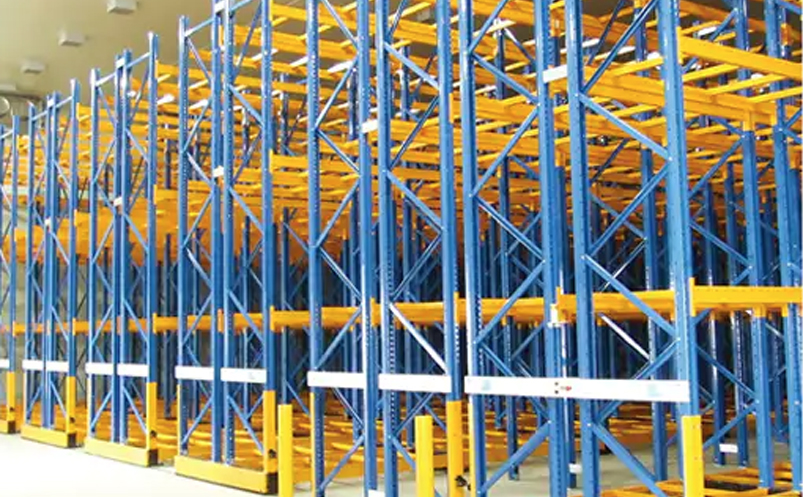Wheel conveyors are an important part of material handling systems. They are widely used in warehouses, production facilities, and logistics centers because they simplify the movement of goods. Whether a facility deals with heavy industrial components or light consumer products, wheel conveyors play a role in supporting efficient flow. However, the way these conveyors handle heavy loads compared to light loads differs in terms of design, function, and operation.
Introduction to Wheel Conveyors
A wheel conveyor, sometimes called a roller guide rail or roller slideway, is a system made up of multiple wheels fixed to a frame. Items are placed on top of the wheels and can then roll forward in the desired direction with minimal effort. Unlike powered conveyors, wheel conveyors are usually gravity driven or manually assisted, which makes them simple, cost effective, and adaptable to many situations.
Wheel conveyors are commonly used for cartons, totes, pallets, or components that need to move across short to medium distances. They can be installed on production lines, in order fulfillment areas, or at loading and unloading zones. The design is modular, which allows companies to adjust the length and angle according to the type of load being handled.
Core Principles of Load Handling
To understand how wheel conveyors handle different load types, it is necessary to look at the principles that govern their operation.
Load Distribution
Each wheel in the conveyor supports part of the load. Heavier items spread their weight across multiple wheels, while lighter items place less demand on each wheel. The design of the conveyor ensures that no single wheel bears the entire burden.
Friction and Rolling Resistance
The smoother the wheels and the better their alignment, the less resistance there is when moving loads. Light loads can sometimes be slowed down by higher friction if the wheels are not designed for minimal resistance. Heavy loads, on the other hand, can overcome friction more easily due to their mass, but they may cause wear if the wheels are not strong enough.
Material and Wheel Design
Wheels can be made from plastic, steel, or other engineered materials. The choice of material directly influences how the conveyor deals with different weights. For example, light duty conveyors may use plastic wheels, while heavy duty conveyors require steel or reinforced wheels.
Frame and Support
The brackets and frames that hold the wheels must match the type of load expected. For light loads, lightweight aluminum or thinner steel may be used, while heavy loads demand reinforced frames with stronger supports.
Handling Light Loads
Wheel conveyors are particularly effective for moving light loads such as boxes, small packages, and plastic bins.
Ease of Movement
Light loads require less force to move, making gravity wheel conveyors a natural choice. A slight incline is usually enough to allow products to roll from one end to the other without manual pushing.
Flexibility
Facilities handling light loads can adjust the conveyor layout frequently. Because the weight is not significant, lighter frames and portable systems can be used. This allows quick reconfiguration of the workspace.
Reduced Wear
Since light loads place minimal stress on wheels and frames, maintenance needs are relatively low. Plastic wheels often suffice for this type of application, keeping costs down.
Considerations
The main challenge with light loads is that items may not have enough weight to roll smoothly. This can lead to stalls or uneven movement. To address this, closer wheel spacing is often required to ensure consistent contact. Additionally, using low resistance wheel designs helps items move without interruption.
Handling Heavy Loads
When it comes to heavy loads, the demands on wheel conveyors are much greater. Items such as pallets, large containers, or metal components require strong designs and careful planning.
Stronger Construction
Heavy load conveyors use reinforced steel frames and wheels made from metal or high strength composites. The brackets must be firmly anchored to the ground or structure to prevent bending or failure.
Wider and Thicker Wheels
To spread out the force, heavy load conveyors often use wider wheels or dual wheel arrangements. This increases stability and prevents point loading, which could damage either the product or the conveyor.
Closer Spacing
Heavy items require more wheels per unit length of conveyor to distribute weight evenly. This reduces the strain on each wheel and minimizes the risk of deformation.
Controlled Movement
Unlike light loads that sometimes need extra momentum to roll, heavy loads may roll too quickly on an incline. Safety features such as brakes or stopper mechanisms are often included to prevent items from gaining excessive speed.
Maintenance Needs
Heavy loads create more wear and tear. Bearings, axles, and frames require regular inspection and lubrication. Preventive maintenance becomes critical to avoid breakdowns and safety hazards.

Comparing Heavy vs Light Load Applications
Looking at how wheel conveyors manage heavy and light loads reveals several contrasts:
Design Requirements
Light loads allow for lighter materials and simple construction.
Heavy loads demand robust materials, reinforced brackets, and precise spacing.
Operational Characteristics
Light loads may stall if friction is high.
Heavy loads may move too quickly without controls.
Maintenance Patterns
Light load conveyors need minimal upkeep.
Heavy load conveyors require frequent checks and adjustments.
Cost Considerations
Light duty conveyors are more affordable and easier to install.
Heavy duty systems involve higher costs due to stronger materials and added safety features.
Best Practices for Using Wheel Conveyors
To make the most of wheel conveyors in any application, facilities should follow these practices:
Match Conveyor Type to Load
Select wheel material, spacing, and frame strength based on the heaviest expected load. Overestimating capacity is safer than underestimating.
Use Proper Spacing
Ensure wheel spacing is close enough that items do not sag or get stuck. For heavy loads, tighter spacing is essential.
Monitor Incline Angles
The angle of installation affects how loads move. Light loads may need a steeper angle, while heavy loads may require a gentler slope with braking controls.
Inspect Regularly
Even though wheel conveyors are simple in design, routine inspections prevent failures. Check for cracks, bent brackets, and worn wheels.
Train Workers
Employees should understand safe loading limits and how to handle items on the conveyor. Misuse can damage both the conveyor and the products.
The Role of Wheel Conveyors in Modern Facilities
Wheel conveyors are versatile tools that adapt to different industries. In e commerce fulfillment centers, they speed up the movement of cartons. In automotive plants, they move heavy engine components between stations. Their ability to handle both heavy and light loads makes them suitable for a wide range of tasks.
As industries move toward more automation, wheel conveyors continue to play a role because they integrate easily with other systems. For example, they can be combined with powered conveyors, lifts, and sorting machines to create hybrid solutions. This adaptability is why wheel conveyors remain relevant in both small businesses and large industrial operations.
Future Developments
Advances in materials and design are improving the performance of wheel conveyors. High strength plastics and engineered composites allow for lighter conveyors that still handle significant weight. Adjustable modular systems are becoming more common, enabling quick adaptation to changing load types. In the future, smart sensors may be integrated to monitor wear and detect issues before failures occur.
Conclusion
Wheel conveyors may seem simple, but their design and application vary greatly depending on whether they are used for heavy or light loads. Light loads benefit from flexibility, low cost, and easy operation, while heavy loads require reinforced construction, precise spacing, and safety measures. By understanding these differences and applying best practices, companies can ensure safe and efficient material handling.
In the end, wheel conveyors remain a dependable solution for guiding and supporting movement in countless industries. Their ability to manage both ends of the load spectrum demonstrates their value as an adaptable and efficient tool in modern material handling.







